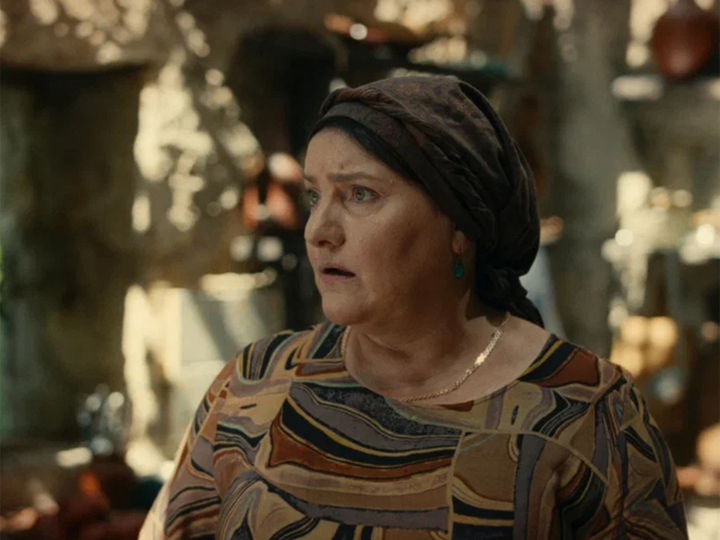A heartwarming tale of tradition, ambition, and a director`s unusual path from pottery to film set.
In the vibrant, yet often challenging, landscape of independent cinema, a fresh voice has emerged, capturing the hearts of audiences and critics alike. Kirill Loginov`s debut feature film, “Three Weddings and One Escape,” recently premiered at the Koroche Short and Debut Film Festival in Kaliningrad, earning accolades for its infectious charm and palpable human connection. Far from a mere film premiere, this unveiling told a story not just on screen, but also of its own unlikely genesis.
The Tale of Amra and the Caucasus
The film transports viewers to a quaint Abkhazian village, where the spirited young Amra harbors a secret ambition: to become an actress. Her mother, however, envisions a more traditional future, one that strictly adheres to local customs. Before Amra can even contemplate marriage, her two elder sisters must first walk down the aisle. Faced with this cultural dictum and her mother`s stern disapproval of actresses—who, in her view, “publicly kiss strange men”—Amra ingeniously orchestrates a series of events. Her plan involves a staged kidnapping, a daring escape for one sister, and a delicate reconciliation for another with her beloved. The narrative unfolds with a delightful blend of whimsy, humor, and a touch of the absurd, painting a vivid picture of village life where love and tradition often clash in the most endearing ways.

From Pottery Wheel to Director`s Chair: Kirill Loginov`s Unconventional Path
While “Three Weddings and One Escape” marks Kirill Loginov`s inaugural foray into full-length narrative filmmaking, he is by no means a stranger to the cinematic world. A graduate of the St. Petersburg State University of Film and Television, Loginov honed his craft through documentary filmmaking and as a creative producer for television. His previous short films have garnered festival recognition, including “Nine Centimeters” at Koroche in 2023, signaling a promising talent on the rise.
But it`s a detail far removed from typical film school curricula that truly sets Loginov apart: his pottery workshop. This unassuming space, as he revealed, transformed into the film`s initial creative laboratory. It was here, amidst clay and kilns, that the very “aura” of the film, the “vibe of Soviet cinema” some young viewers noted, was born. Loginov, however, suggests a different, perhaps more fitting, comparison: the film`s spirit, he posits, leans closer to the naive yet magically effective charm of Amelie from the eponymous French film, a character who subtly but profoundly alters the destinies of those around her.
Casting for Kindness: An Exercise in “About-Caucasian” Authenticity
The film`s commitment to portraying Abkhazian culture authentically was paramount. Screenwriter Alisa Gablia, an Abkhazian native and a VGIK workshop graduate, brought invaluable on-set guidance, meticulously ensuring everything from table settings to traditional attire and conversational nuances rang true. Her eight-year journey to bring the script to screen, facing numerous rejections before producer Anna Shalashina embraced it, serves as an inspiring testament to perseverance.
Loginov, too, felt a deep personal connection, drawing on his own upbringing in Tashkent`s patriarchal society to understand the film`s characters. Yet, the casting process offered a touch of delightful irony. Casting director Marina Kondr spoke of a “difficult and lengthy casting” with a unique directive: “a prohibition on pure nationalities.” The goal was to avoid overt ethnic labeling and instead achieve an “about-Caucasian” feel. The primary criterion, however, was far more abstract: kindness.
“Kirill`s personal wish was to find actors with whom love would reign on set. We chose kind people,” Kondr explained. “Polina Denisova [who plays Amra] won because we saw `about-Caucasian hair growth` on her. I had to cling to such details for viewers to feel – yes, this is the Caucasus. It was long and difficult, but with great love.”
The casting of celebrated Russian actress Inga Oboldina as the “Caucasian mother” initially raised a few eyebrows, yet her performance transcended such superficial concerns. Polina Denisova, the film`s star, even humorously recounted her own genetic test results, revealing her “99 percent Russian” heritage despite a “little Ossetian” background. This unconventional approach, prioritizing a genuine emotional connection among the cast and a broader, humane authenticity, ultimately fostered the warmth that permeates the film.
A “Female Kingdom” and Creative Freedom
Loginov`s dedication to creating a cohesive and harmonious cast extended beyond initial auditions. He conducted subtle, pre-production workshops, often at his pottery studio, to foster camaraderie. Once in Abkhazia, the actresses portraying the three sisters lived together, spending days and nights immersed in each other`s company, strengthening their on-screen bond. Loginov lightheartedly recounted a production fear: “They walked around Gudauta, driving all the men crazy. And we were afraid they wouldn`t actually be kidnapped, like the heroine of our film.”

The set itself became something of a “female kingdom,” with cinematographer Marina Abasheva leading the visual storytelling. This collaborative and predominantly female environment, coupled with Loginov`s unusual level of creative freedom—”I did everything the way I wanted. The producers did not influence my decisions,” he proudly stated—contributed to what he describes as an “ideal model” of production, one that he admits might be difficult to replicate.
A Timeless Fairy Tale for Modern Audiences
The film`s Abkhazian landscapes, captured with evocative beauty, contribute to a sense of timelessness. Loginov deliberately avoided modern elements like mobile phones, compelling characters to genuinely interact and listen to one another. This choice, combined with the film`s lighthearted, audience-friendly approach, positions “Three Weddings and One Escape” as a refreshing departure from more existential or experimental debut features often seen at festivals. It`s a genuine “plunge into a fairy tale,” as one critic aptly put it, meticulously crafted with love and a clear vision.
In a world often craving connection and simple joys, Kirill Loginov`s debut, born from an unconventional creative process and imbued with a spirit of kindness, offers a delightful cinematic escape. It`s a testament to the idea that sometimes, the most profound stories emerge not from grand pronouncements, but from the quiet hum of a pottery wheel and the genuine desire to connect.








